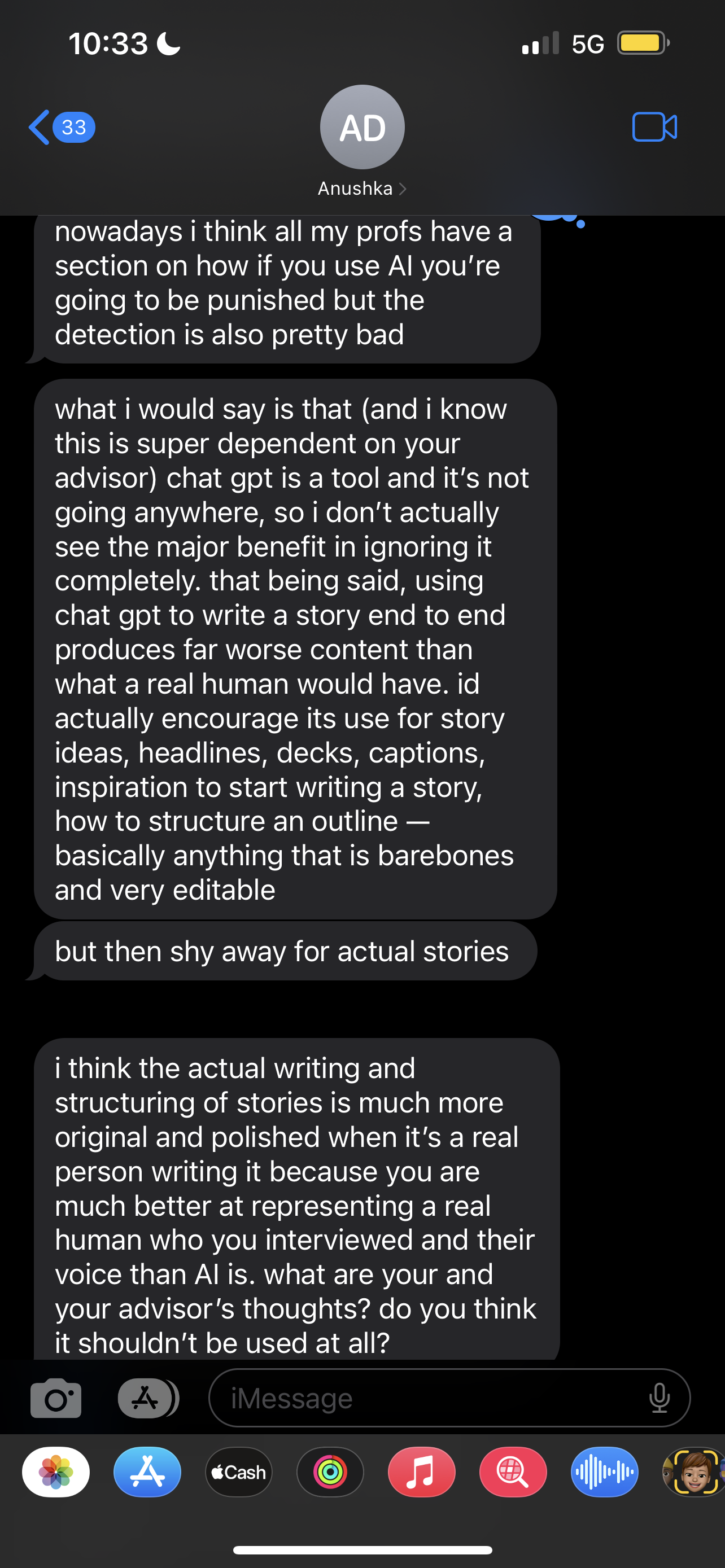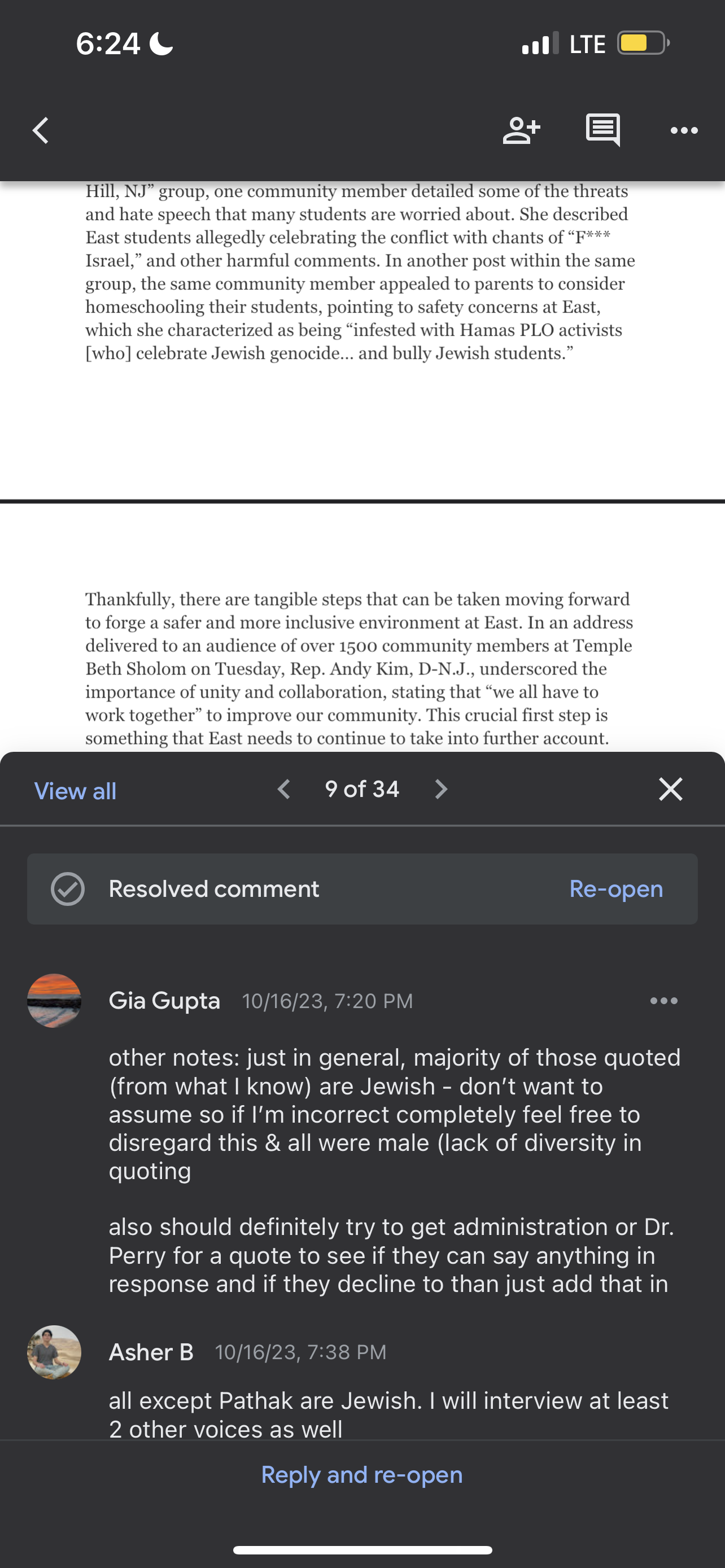Plagiarism / artificial intelligence
In the beginning of the year, one of the section editors came to my co-EICs and I to tell me about how she thought one of the articles someone submitted to her was written by artificial intelligence. When we approached her, she denied it, but then we later found out she actually did utilize it. At the time, we were not sure what consequences to give because this was a situation entirely new to us.
As a result, I attended conference sessions about how to address AI in classrooms and spoke to other EICs to see how they were addressing the issue. Eventually, I was able to draft the first ever AI policy for my school newspaper, serving as a foundation for future changes as the technology evolves.
Another time, I was reading a story on Eastside Online and realized it seemed very similar to another article already online. I reached out to my EICs and helped them come up with a plan to recenter the values of accuracy, originality, fairness, and truth in Eastside.







